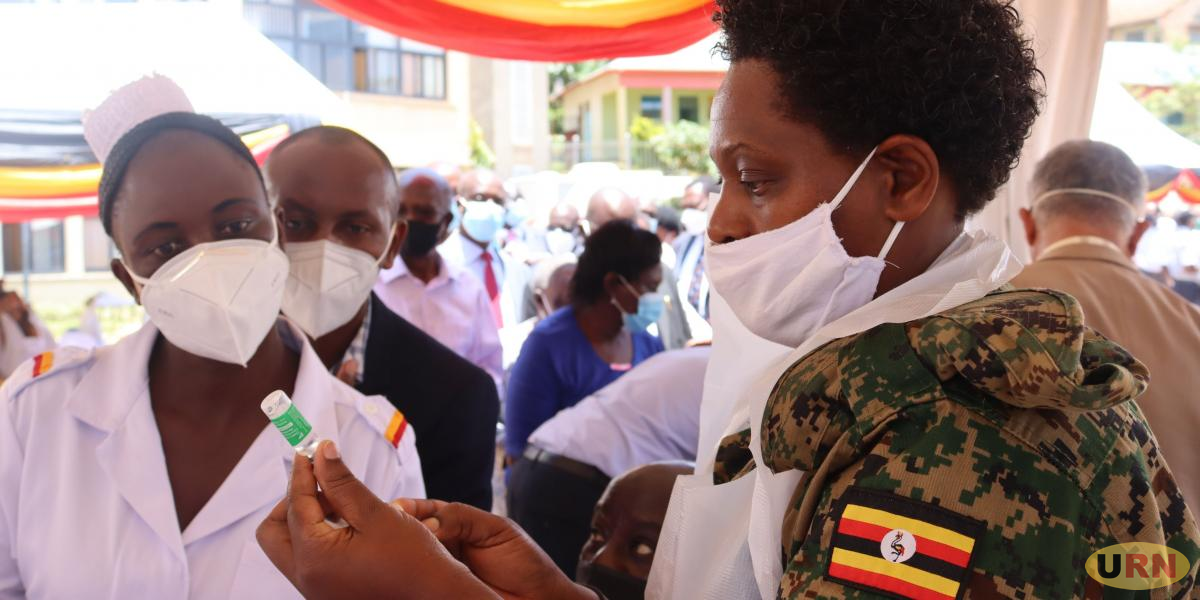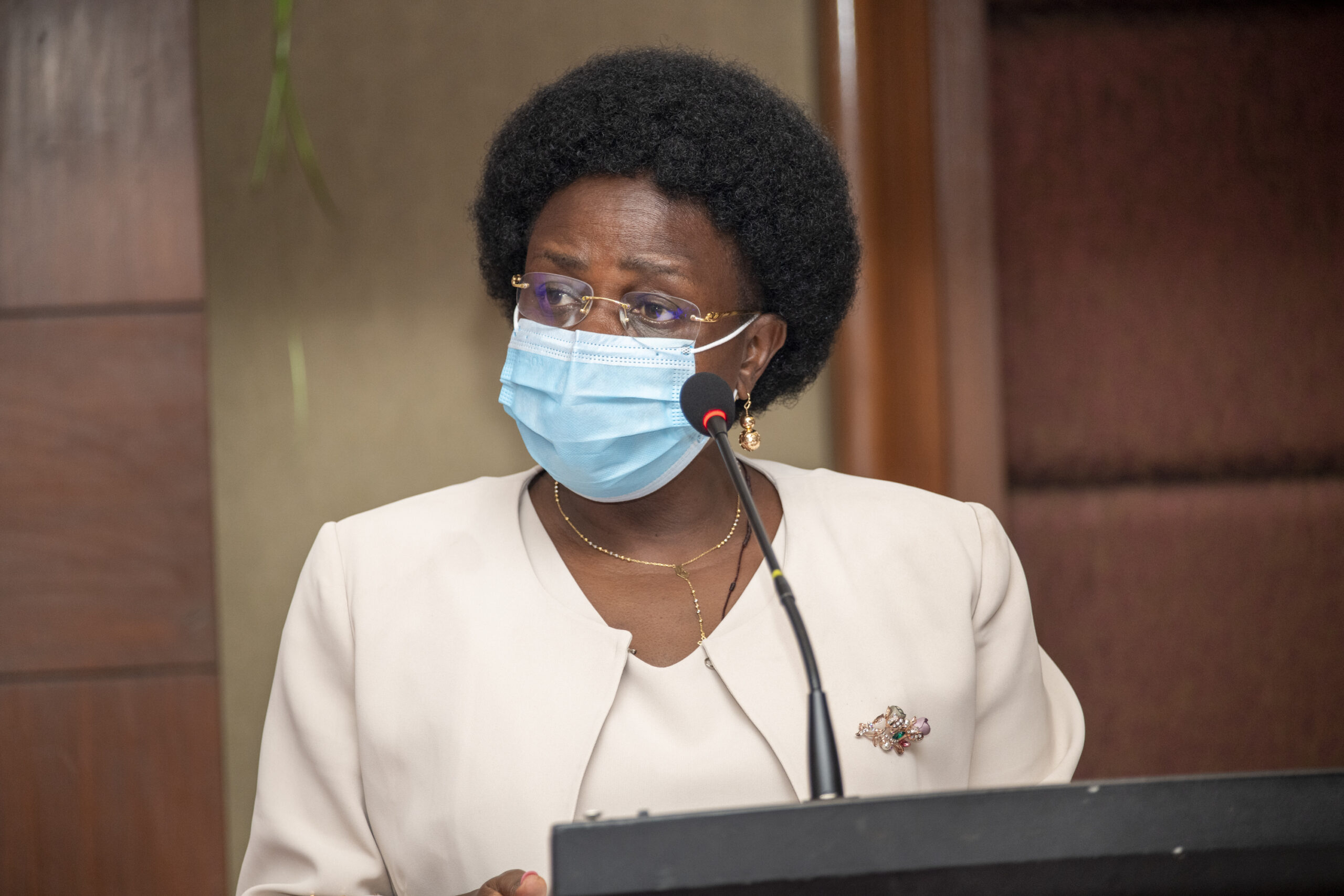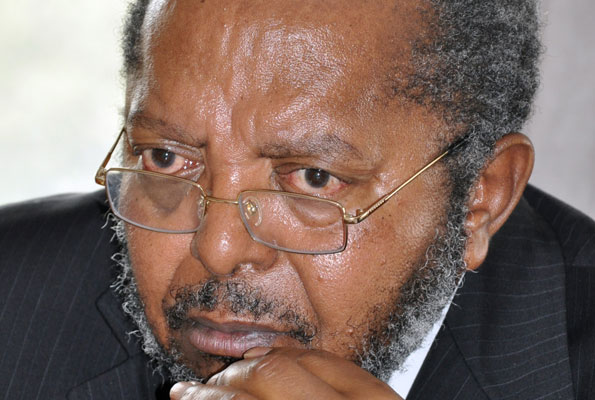What begun as a new chapter in the COVID-19 response when the first consignment of vaccines arrived in the country seems to have turned into a prolonged waiting game for many Ugandans, too many Ugandans.
Early in March, Uganda received the first consignment from the COVAX facility of 864,000 doses of the AstraZenca vaccine.
The doses were a donation sent to all COVAX members. In true Africa fashion, the vaccines were met with pomp and jubilation at Entebbe International Airport.
The vaccines were welcomed by both Ugandan officials and foreign diplomats. Their descent from the Emirates 777 Boeing flight was met with applause. Photos were taken and speeches were made.
It felt like a breath of fresh air had been injected into the country’s COVID-19 response. At the time, the country had reported a total of 40,408 cases of COVID-19 and 334 deaths.
In her speech, the then minister of health Dr Jane Ruth Aceng urged everyone person to wait their turn to get the vaccine.
“This is a great day and I want us to start by thanking God. This vaccine will go along way in the flight against this pandemic and I encourage everyone to wait for their turn to receive the vaccine. This vaccine will help us respond better to the disease,” Dr Aceng said.
Health ministry officials at the time were convinced that they could vaccinate 26.7 million Ugandans aged 18 and above in good time. Given previous experience in 2018 during the Measles/ Rubella,Polio mass vaccination campaign where over 18 million people were vaccinated in four days, officials were confident that at the latest their target would be met by early 2022.
The plan was to vaccinate 26.7 million Ugandans by the end of 2021 or early 2022.The immediate target was to vaccinate 20 percent of the 26.7 million, which equaled to 5.34 million people as fast as possible. These would include the frontline workers and vulnerable groups.
However, four months after the arrival of the first vaccines, it seems we are no where closer to vaccinating the targeted immediate 5.34 million people, or even procuring enough vaccines to do so.
Only 869,915 people have been vaccinated, most with only with the first dose, as less than 60,000 have got two doses. The country only has 175,200 vaccines in its stock and is not sure of whether it will get enough vaccines to fully vaccinate 26.7 million Ugandans. For an exercise that began with jubilation, it seems the celebrations started too early.
So What Went Wrong?
How has a country that has carried out Immunization successfully for many decades – often scoring more than 100% of immunisation targets and even managed to kick out disease such as polio- now be behind its target by 84% (869,915 out of 5,400,000)?
Did the country fail so dismally to meet the target or did the government set an unrealistic target?
Is there any hope of immunizing 26.7million Ugandans anytime in the foreseeable future?
According to health economics experts, the country’s biggest huddle to vaccination was financing and access to vaccines.
Prof Frederick Ssengooba, a health policy and planning experts says there was no way a smaller player like Uganda would have been able to get all the required vaccines this year.
“Uganda needed a few million doses of the vaccine,” say the professor. “Countries that were first to get the vaccines like the US made orders for hundreds of millions of doses. They had their money ready. Many of them had financed research into the vaccines. So obviously they were first priority when it came to who gets what.”
The government has only released 41 billion Shillings (just over $11 million) to procure vaccines. With countries spending millions of dollars towards the same the cause, the government’s preparedness in procuring enough vaccines is shaky since preparations to procure vaccines started in 2020.
As early as last year in October, Uganda like the rest of the world knew that COVID-19 vaccination would take place at the end of 2020 or early 2021. By December 2020, the country knew that we would be using the AstraZeneca vaccines. By this time, the health ministry had already submitted it’s vaccination plan to the World Health Organisation and the plan was approved. Health ministry officials were given estimates of how much money would be needed to procure vaccines.
During a cabinet meeting in February, it was decided that 60 percent of the population, equivalent to 26.7 million people would be vaccinated. In the same meeting, it was decided that the a total of 18 million doses of the vaccine would be procured from the Serum Institute of India(SII). An estimated Shs 515 billion was needed to procure the vaccines and have them transported here. However, to confirm this order, Uganda needed to deposit a down payment of USD 5 million. The ministry of Finance was supposed to release the funds as soon as possible. However, to date no down payment has been made.
At the time, the health ministry’ vaccination plan was to carry out vaccination in two main phases. During the first phase, the ordered for 18 million doses would be used to vaccinate a total of 4,798,500 million people in the first priority categories. These persons would be given two doses 28 days apart.
In the second phase, the country would depend on an additional 18 million vaccine doses procured from the COVAX facility and donations from other countries such as China which had developed their own vaccines to vaccinate people aged 50 and below. This group would be vaccinated starting with the oldest to the youngest until the targeted number was met. Uganda had to pay Shs 582 billion to procure the vaccines. This money too has not yet been paid.
According to the vaccination roll out plan, the vaccines would be stored at the National Medical Store from where they would be sent to district local governments. At district level, five health workers would carry out vaccination at designated health centers.
Before the ordered doses from COVAX facility could arrive, the facility donated 3.5 million doses of the vaccine to Uganda. The vaccines vaccines would be delivered in two consignments. The first donation of 1,420,000 vaccines would arrive between January and March, while the second of 2,130,000 vaccines would arrive between April and June.
On March 5, the government received 864,000 doses of the AstraZeneca vaccines from the COVAX facility. A few days later, another donation from India also received. Since the Serum Institute of India -SII deal was not confirmed by then plus an increase in demand of the vaccine by rich countries, government decided to use the donated vaccines totaling to 964,000 to vaccinate priority groups.
When asked why the country got less doses than previously expected, the programme manager of the Uganda National Expanded Programme on Immunization, Dr Alfred Driwale said it was due to high demand for the vaccines. He however quickly added that more vaccines were expected in April.
The health ministry decided to start vaccination with health workers and teachers. A total of 700,000 people would receive the vaccine in this round.
However instead of giving them two doses, Driwale in an interview with URN in March said they decided to give them one dose and use the remaining doses to vaccinate as many people as possible.
“Before we had planned on vaccinating a small number and keeping the rest of the vaccines for a second shot but now since we are going to get more vaccines, we decided to change our plan to have more people vaccinated,” Dr Driwale said.
This change in plan was backed by recommendations from the World Health Organisation that said it was more beneficial for as many people to get at least one dose of the vaccine than have few people get two doses. At the time, the UK had decided to delay issuing the second dose of the AstraZeneca vaccine by 12 weeks.
The health ministry’s plan then was that all the available vaccines would be used in a space of not more than two weeks. However due to low uptake of the vaccine caused by a number of issues like misinformation by antivaxers, fear of blood clots, poor planning and little public sensitization, the vaccines that had been thought would be used up 14 days ended up lasting for four months.
With the fear of the vaccines expiring on July 10th, the health ministry decided to open up vaccination to the entire country and also issue second doses after 8 weeks instead of the planned 12 weeks. Driwale says they could no longer wait for teachers to get the vaccine.
“Many teachers did not want to get vaccinated yet there were people in Kampala who wanted the vaccines. We decided to give those that wanted the vaccines instead of holding onto them and they expire,” Driwale said.
While this helped increase uptake of the vaccine, it meant more (around 57,797) doses of the vaccine would be used to issue second doses early yet more people could have received their first jab.
The Surge of COVID-19 Cases in India and Vaccine Inequity…
To date, Uganda has received a total of 1,139,200 doses of the AstraZeneca vaccines. All of these doses have been donations, the most recent (175,200) having coming from France through the COVAX facility.
The country has not been able to receive any of the initially ordered doses 36 million doses from India or the COVAX facility. It is still depending on donations.
Driwale says for African countries like Uganda made orders late and for a few doses, the issue is not money but supply of the vaccine.
When vaccination production begun, the world’s richest countries claimed most of the vaccine stocks available. It is estimated that the world’s richest nations in total had bought one billion more doses than they required. Countries like Canada are said to have procured vaccines that could protect Canadians five times over. As such vaccine sharing entities like COVAX could not access as many vaccines as ordered for.
In addition to this, the surge of COVID-19 cases in India made matters worse. SII which was COVAX’s biggest supplier of vaccines couldn’t meet its orders. The company in a statement in April said they would not be able to meet some of its orders due to commits made to India. The government ban on export of the vaccine left countries like Uganda unable to access ordered vaccines and further donations.
When will Uganda hit the 26 million Vaccination Target to feel safe?
As of Friday, a total of 869,915 people had been vaccinated. Of these, only 57,797 of these ,majority of whom are health workers, politicians and persons above the age of 50,have received two doses of the vaccine. Another 175,200 persons are expected to get their second dose soon.
This leaves 636,918 vaccinated Ugandans with only one dose of the vaccine. According to President Yoweri Museveni, another consignment of vaccines from COVAX of 688,000 vaccines is expected in early August.
A source from the health ministry who prefers to remain anonymous says these vaccines will be used to issue another dose of the AstraZeneca vaccine.
“Supply of AstraZeneca is no longer stable. Since we are now looking at using other vaccines, these doses will probably be used to vaccinate all those who got Astra so that theirs can be completed,” the source said.
An estimated 51,000 vaccines will likely be left over after all the persons who got their first dose are fully vaccinated. These doses according to the source will be used to vaccinate another 25,000 people fully.
The government of Uganda is now looking at getting vaccines from else where to vaccinate the remaining population. China and Russia seem to be the fore-runners in our next vaccine search. There are also plans to use the Johnson and Johnson one jab vaccine.
Driwale says they are considering what to use carefully because they need to take into account the country’s cold storage capacity.
” The vaccines we can comfortably use in the country are those that can be stored at normal refrigeration temperatures,” he said.
While the country is looking for where next to procure vaccines, it remains unknown when the unvaccinated population, estimated at over 25 million people will get vaccinated.
The country is expecting a donation of 300,000 vaccines from China. However as of now it is not clear whether the country will be able to procure more vaccines from them.
The World Health Representative to Uganda, Dr Yonas Woldermariam says they working at getting other providers of vaccines.
Last month, the government paid Shs 38.6 billion to COVAX through the United Nations Children’s Fund(UNICEF) to procure vaccines. However health officials are not sure how many vaccines they will be able to get even after making a down payment.
The government has also started researching to develop its own vaccine. The vaccine is now being tested on animals. President Museveni says by next year, the country will no longer depend on other countries for vaccines or treatments for the disease.
To date, a total of 70,176 cases of COVID-19 and 626 deaths have been reported. As we wait for more vaccine deliveries, experts predict that it might take government more than a year to vaccinate all Ugandans – if all the required doses are available.
In the mean time, Dr Monica Musenero, the senior presidential advisor on epidemics and also the designate minister of science and innovation in the office of the president says people need to follow all public health preventive measures.
“As we wait for more vaccines, it is important for people to adhere to public health measures,” Dr Musenero said. “These are time tested measures that have shown they are effective when followed. People need to wear their masks, wash hands and also practice social distancing. We are in a lockdown now, people should stay home instead of going to town.”





